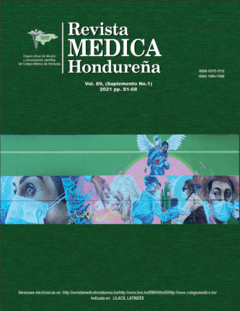Forestier syndrome: clinical case and literature review
DOI:
https://doi.org/10.5377/rmh.v89iSupl.1.12184Keywords:
Conservative treatment, diopathic diffuse skeletal hyperostosis, Spine.Abstract
Background: Forestier syndrome, also known as Diffuse Idiopathic Skeletal Hyperostosis (DISH), is a disease of unknown etiology that is characterized by ossification of the anterior spinal ligament, being the cervical and thoracic portions the most affected frequently. This disease is more common in men and is associated with diabetes, high blood pressure, dyslipidemia, and endocrine disorders. Description of the clinical case: 63-year-old female patient with a history of cervical pain for 32 years, who 6 years after the onset of the symptoms, presented limitation in neck mobility; she presenting several episodes of dysphonia for 10 years; At the time of consultation, the patient presented limited mobility of the neck and neck pain. The magnetic resonance image reported: presence of anterior bone growth of the vertebral bodies and that this finding is related to Forestier syndrome. Conclusions: Because it is a little-known disease, it is underdiagnosed and is often confused with other pathologies. Patients are diagnosed many years after the first symptoms appear, including pain, limited mobility, dysphagia, and respiratory distress. Treatment includes symptomatic management, physical therapy, and surgical management.
Downloads
508




